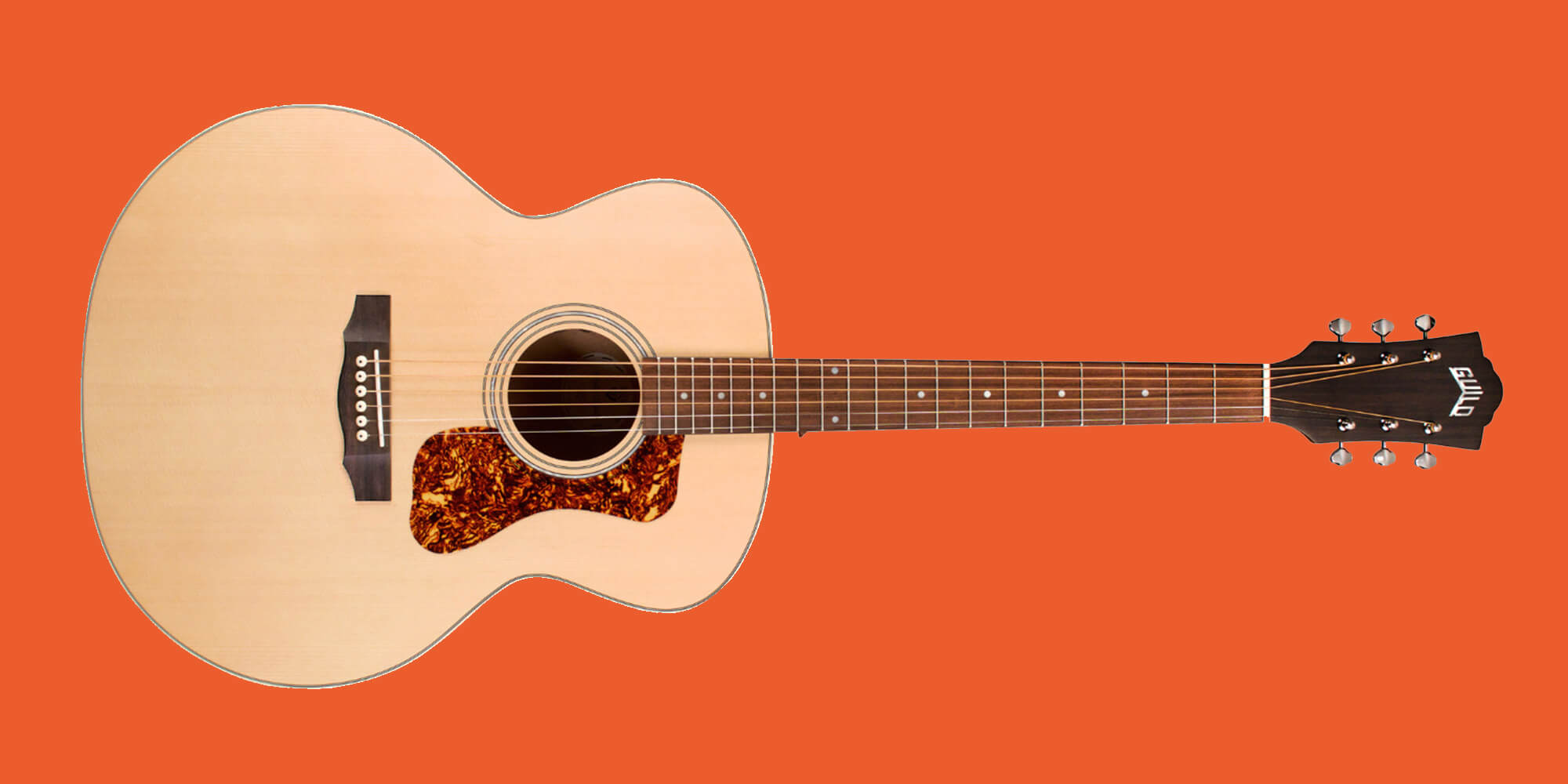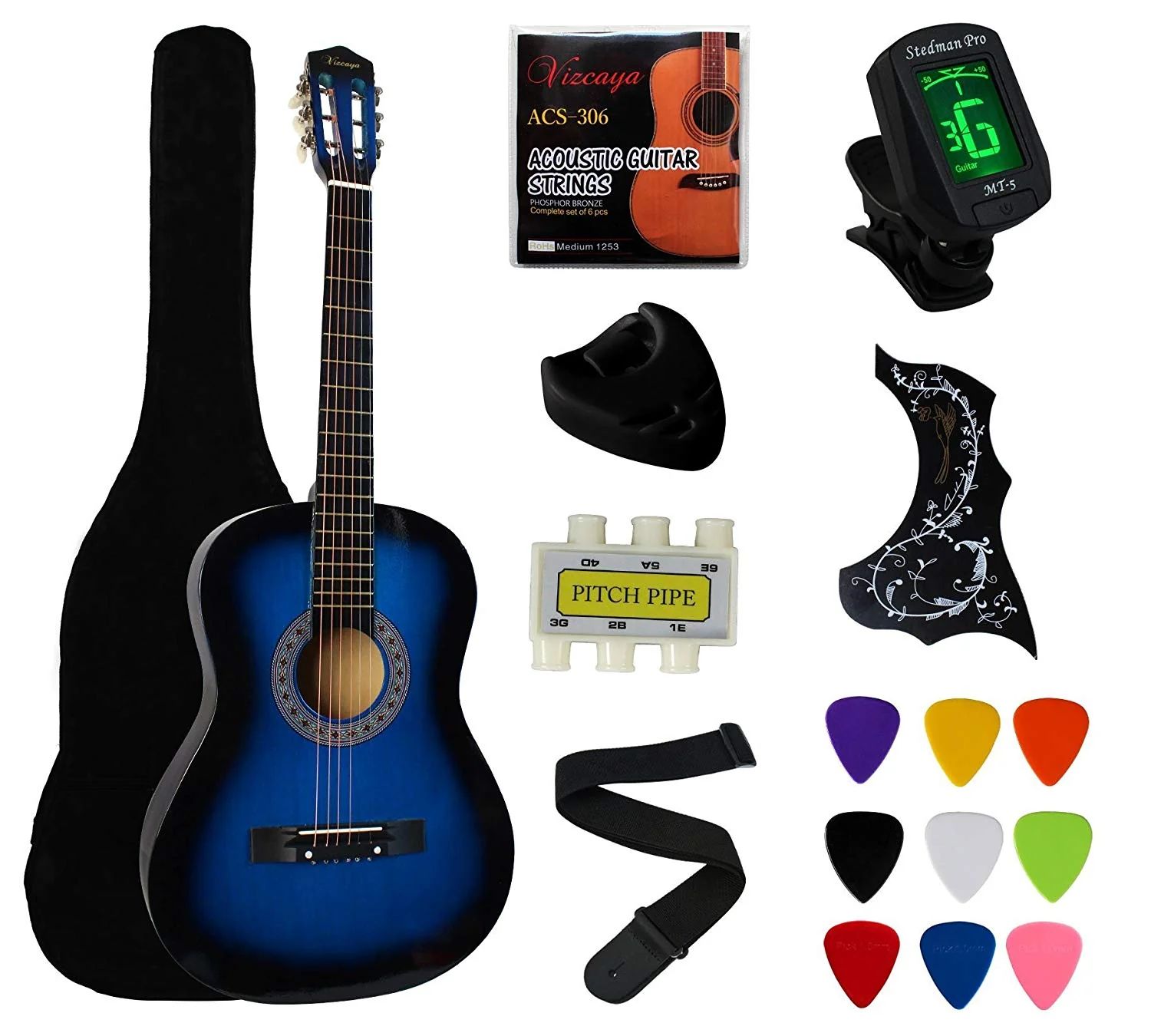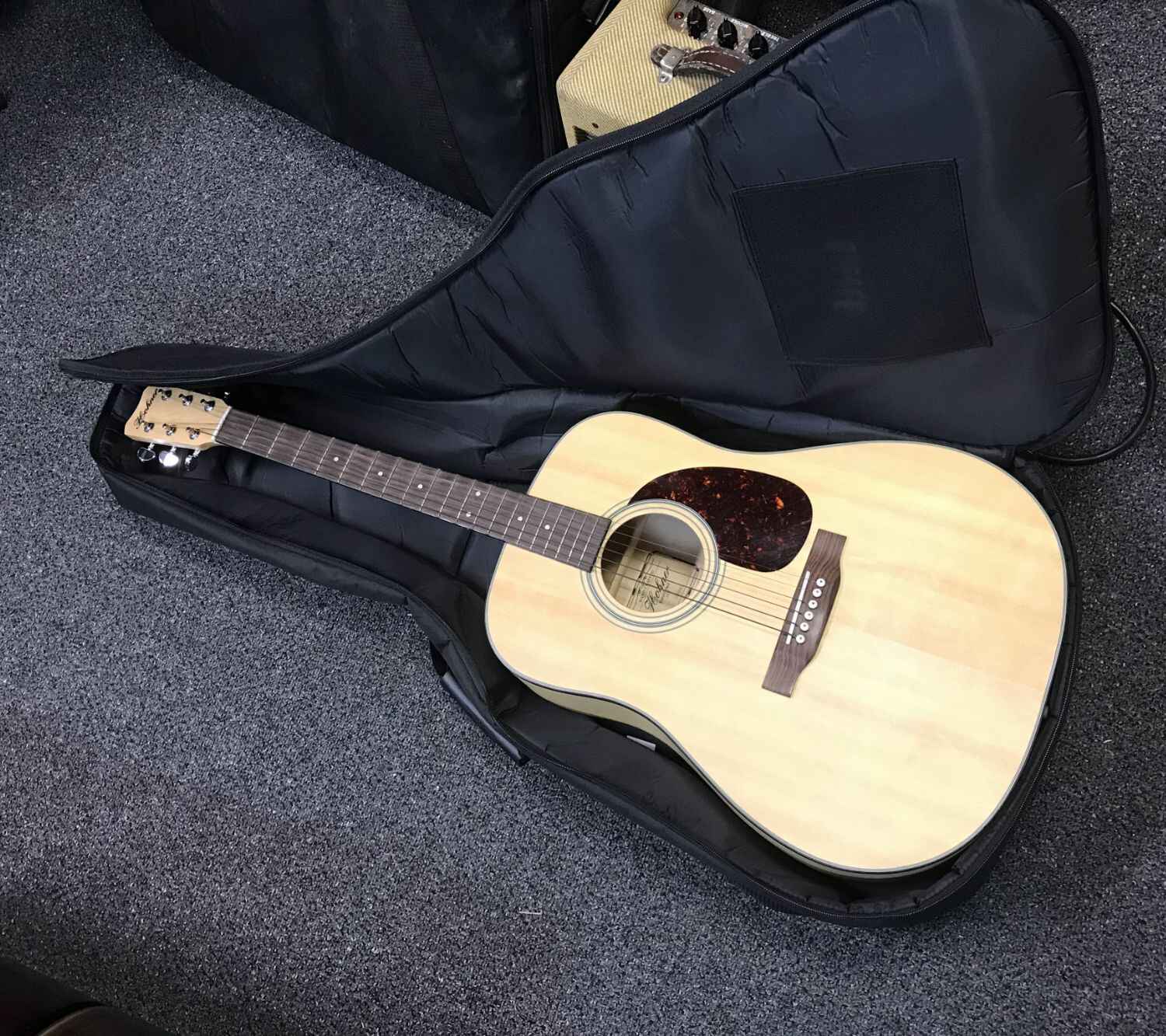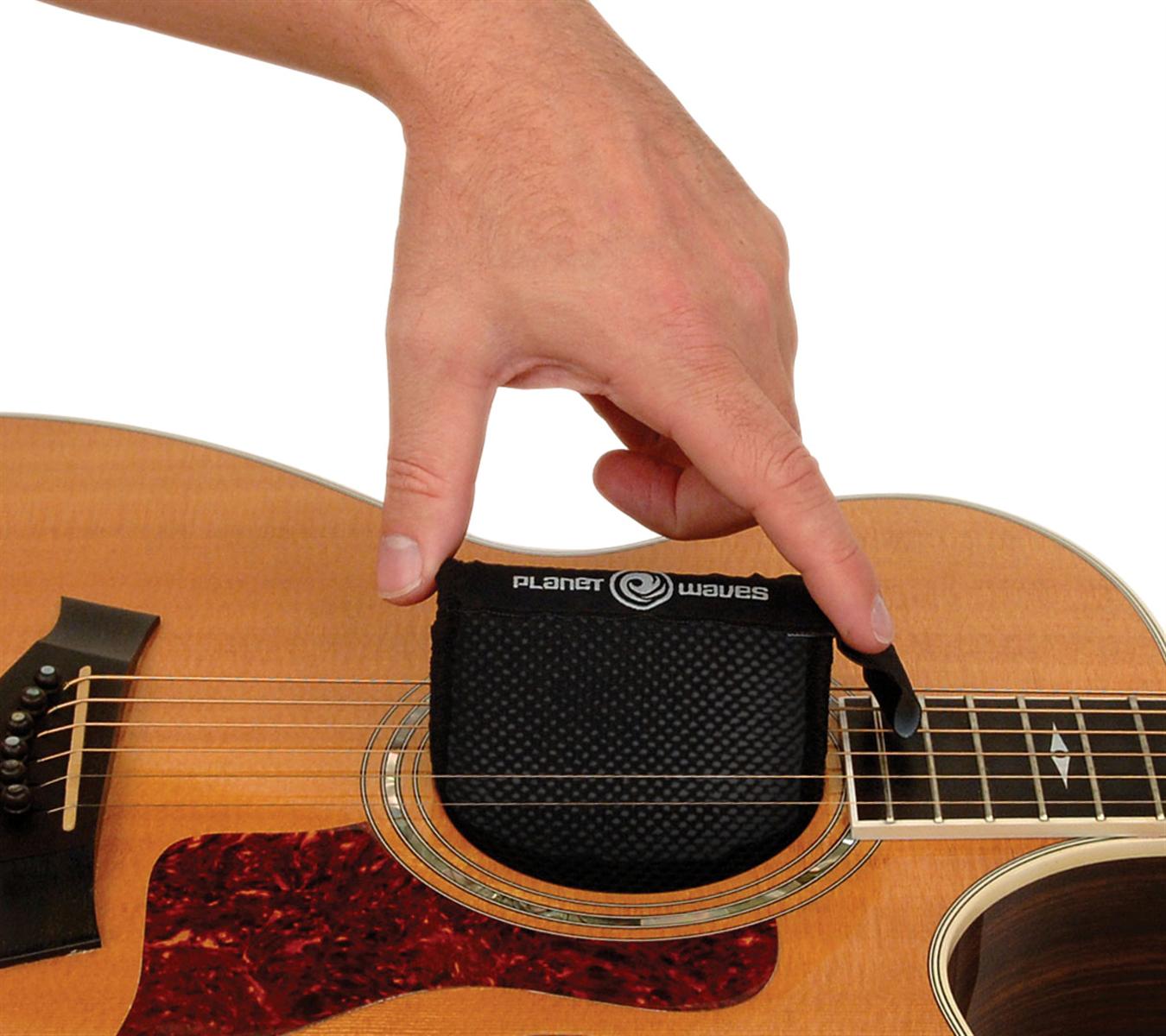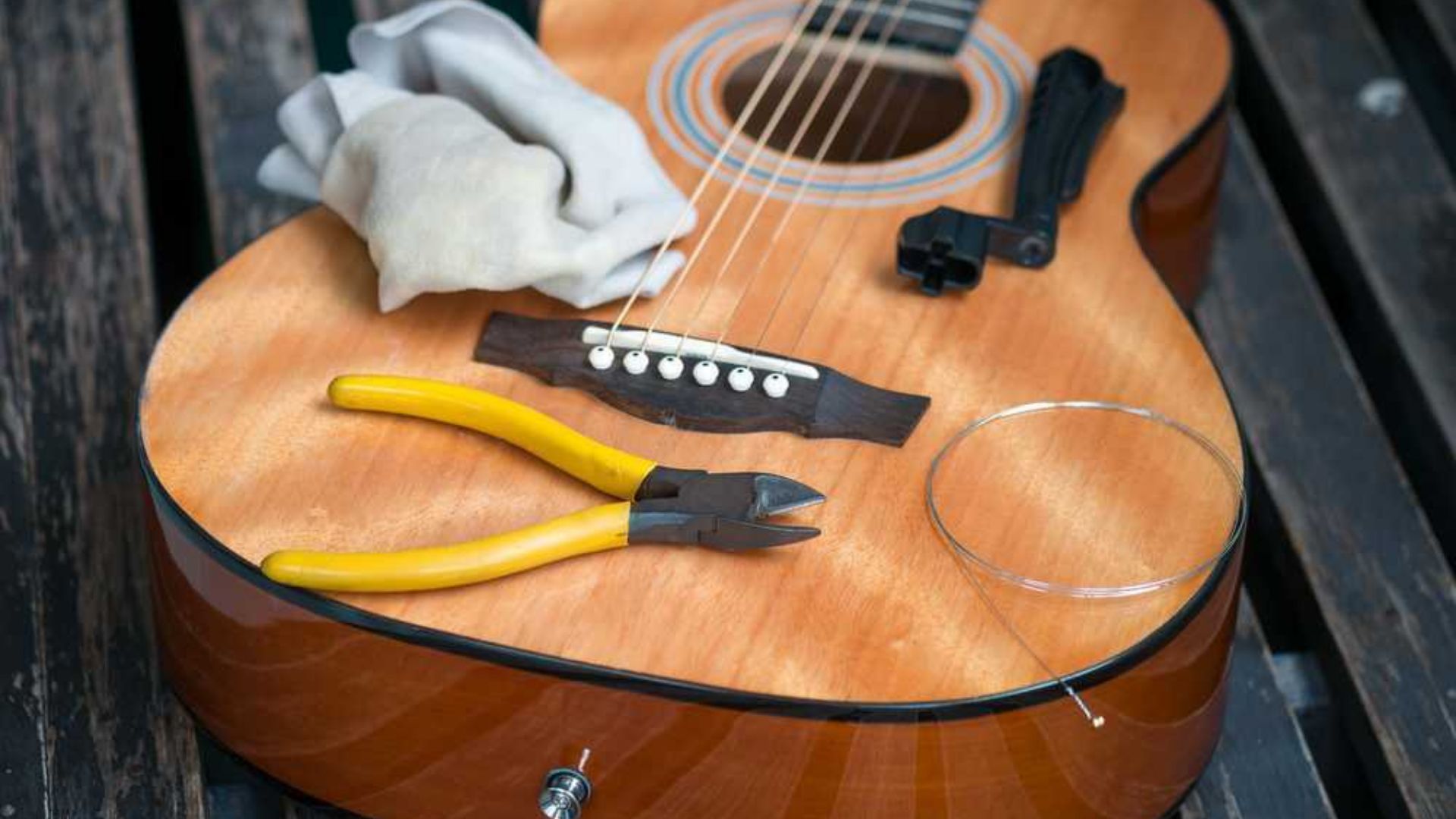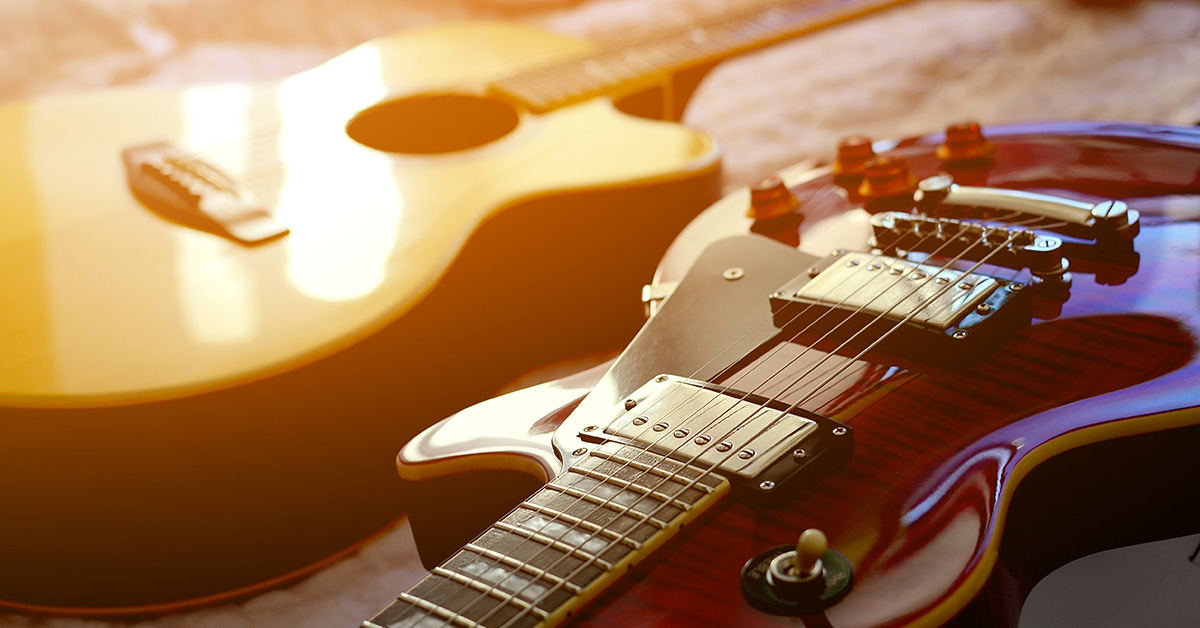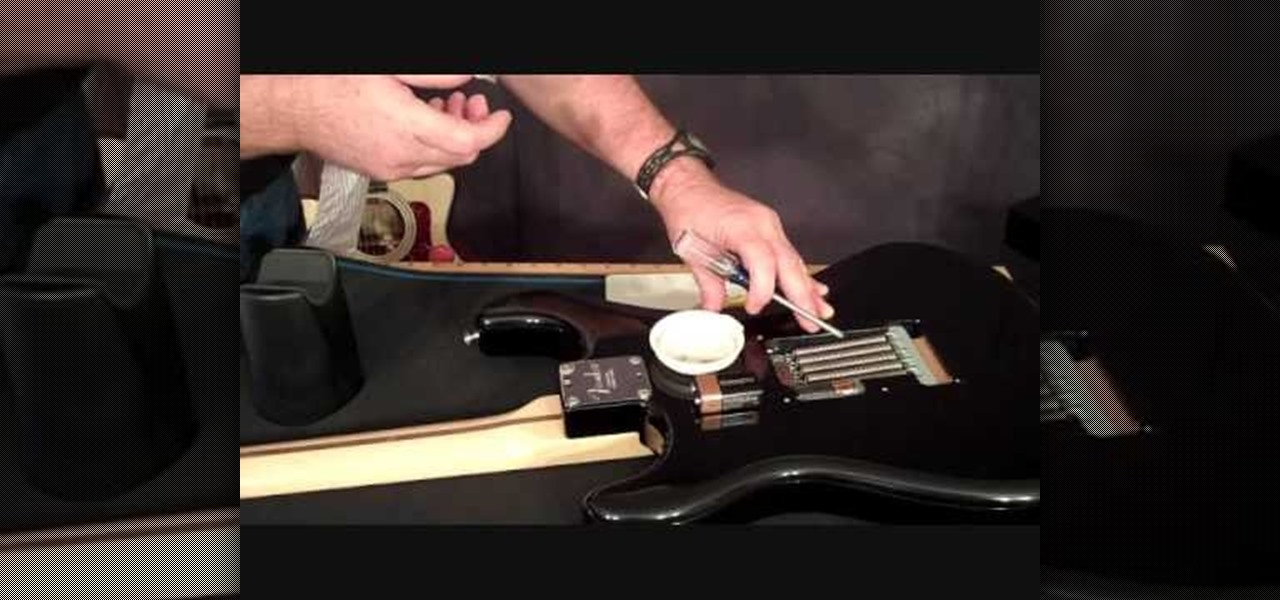Why Proper Guitar Storage is Important
Properly storing your acoustic guitar is essential for maintaining its condition and preserving its quality over time. Whether you’re an avid musician or a casual player, investing in proper guitar storage can save you from costly repairs and ensure that your instrument always sounds its best.
One of the main reasons why proper guitar storage is important is to protect your instrument from potential damage. Guitars are delicate instruments, and exposure to extreme temperatures, humidity, dust, and moisture can lead to warping, cracking, and other structural issues. Additionally, mishandling or accidental bumps can result in dents or scratches, affecting the appearance and playability of your guitar.
Another key aspect of proper guitar storage is maintaining the instrument’s tone and playability. Temperature and humidity fluctuations can cause the wood to expand or contract, which in turn affects the guitar’s intonation and overall sound quality. By storing your guitar in a controlled environment, you can prevent these changes and ensure consistent performance.
Choosing the right location for your guitar storage is crucial. Ideally, you should keep your acoustic guitar in a room with stable temperature and humidity levels. Avoid storing it in basements or attics, as these areas often have fluctuating conditions and are more prone to moisture and temperature extremes. Instead, opt for a living space or dedicated music room where you can control the environment to better protect your instrument.
Guitar stands and guitar cases are two common storage options to consider. While a guitar stand provides convenience and quick access, it offers less protection against environmental factors and accidents. On the other hand, a guitar case offers more comprehensive protection, shielding your instrument from dust, bumps, and humidity fluctuations. If you choose to use a case, make sure it is properly padded and fitted for your guitar.
Regular cleaning and maintenance are also crucial for proper guitar storage. Keep your guitar clean by wiping it down after each use, and occasionally use a soft cloth to remove fingerprints and smudges. Additionally, it’s important to periodically change the strings and adjust the neck tension to maintain optimal playability.
By taking proper care of your acoustic guitar and storing it in the right conditions, you can extend its lifespan and ensure that it continues to deliver top-notch sound. So, make sure to invest in the appropriate storage solutions and implement good maintenance habits to keep your guitar in excellent shape for years to come.
Choosing the Right Location
When it comes to storing your acoustic guitar, selecting the right location is crucial for its well-being. Here are some factors to consider when choosing the ideal space for your instrument:
1. Temperature and Humidity Control:
Extreme temperatures and humidity levels can have detrimental effects on your guitar. It’s important to avoid storing your instrument in areas that experience frequent temperature fluctuations, such as garages or outdoor sheds. Instead, opt for a room with stable temperature and humidity levels. Consider using a hygrometer to monitor the humidity and ensure it stays within the optimal range of 40-50%.
2. Avoiding Direct Sunlight:
Direct sunlight can cause the wood to fade and warp over time. Therefore, it’s best to choose a location away from windows or ensure that the instrument is covered or protected with blinds or curtains during sunny hours of the day.
3. Proper Ventilation:
Avoid storing your guitar in tightly sealed or excessively damp environments, as this can create a breeding ground for mold and mildew. Good air circulation is essential for preventing moisture buildup and maintaining the integrity of the instrument.
4. Away from Potential Hazards:
Keep your guitar away from areas with heavy foot traffic or where it is at risk of being knocked over. Consider placing it in a secure corner or against a wall to minimize the chance of accidental collisions.
5. Protection from Pets and Children:
If you have pets or young children in your home, take extra precautions to ensure they cannot accidentally damage your guitar. Consider placing it out of reach or in a room where access can be restricted.
Remember, choosing the right location for your acoustic guitar is a vital aspect of proper storage. By considering these factors, you can create an environment that promotes the longevity and well-being of your instrument.
Temperature and Humidity Control
Maintaining proper temperature and humidity levels is crucial for the health of your acoustic guitar. Fluctuations in these factors can cause significant damage to the instrument over time. Here’s what you need to know about temperature and humidity control:
1. Temperature:
Extreme temperatures, both hot and cold, can have detrimental effects on the wood and overall structure of your acoustic guitar. Avoid storing your instrument in spaces that experience temperature fluctuations, such as garages or attics. Ideally, the temperature should remain consistent, preferably between 68-75°F (20-24°C).
2. Humidity:
Humidity is an essential factor to consider when storing your guitar. High humidity can cause the wood to expand, leading to swelling and distorting the instrument’s shape. On the other hand, low humidity can cause the wood to contract, resulting in cracking and potential damage. Aim for a humidity level of around 40-50% for optimal guitar storage.
3. Use a Dehumidifier or Humidifier:
If you live in an area with high humidity levels, using a dehumidifier can help remove excess moisture from the air. This will protect your guitar from potential damage due to humidity. Conversely, in dry climates or during winter months when indoor heating can cause low humidity, using a humidifier can help keep the moisture levels in check.
4. Consider a Humidity Control Device:
You may also want to invest in a humidity control device, such as a guitar humidifier or dehumidifier. These devices are specifically designed to regulate the moisture levels within your guitar case or storage area, ensuring a stable and safe environment for your instrument.
5. Monitor and Adjust:
Regularly monitor the temperature and humidity levels in the area where your guitar is stored. Using a hygrometer can help you keep track of these factors. If you notice any significant fluctuations, take steps to adjust the environment accordingly.
Proper temperature and humidity control are vital for preserving the condition and sound quality of your acoustic guitar. By creating a consistent and suitable environment for your instrument, you can ensure its longevity and continued enjoyment.
Guitar Stand vs. Guitar Case
When it comes to storing your acoustic guitar, you have two primary options: using a guitar stand or a guitar case. Each option offers its own advantages and considerations. Let’s explore the differences between a guitar stand and a guitar case:
1. Guitar Stand:
A guitar stand provides convenience and easy access to your instrument. It allows you to display your guitar, keeping it readily available for practice or performance. A stand also eliminates the need to constantly put your guitar in and out of a case, making it more convenient for frequent use.
However, it’s important to note that a guitar stand offers limited protection. While it can prevent your guitar from accidental bumps and falls within a secure environment, it does little to shield your instrument from environmental factors such as temperature, humidity, dust, or sunlight exposure. Therefore, it’s recommended to use a guitar stand in a controlled environment, away from direct sunlight and extreme temperature changes.
2. Guitar Case:
A guitar case provides more comprehensive protection for your acoustic guitar. It shields your instrument from dust, humidity fluctuations, accidental drops, and some temperature variations. Cases typically come in two varieties: hardshell cases and soft gig bags.
Hardshell cases offer the highest level of protection against external impact, ensuring that your guitar remains safe while in transit or storage. They are made of durable materials and have foam padding or plush lining to safeguard the instrument from bumps and shocks. Soft gig bags, on the other hand, are lighter and more portable, suitable for short-distance travels or gigs where convenience is a priority.
Whether you choose a hardshell case or a gig bag, it’s essential to ensure a proper fit. The case should be sized appropriately for your guitar, offering a snug and secure fit to prevent any movement that could cause damage. Additionally, look for cases with additional features like humidity control compartments or neck support to provide more comprehensive care for your instrument.
Ultimately, the choice between a guitar stand and a guitar case depends on your specific needs and circumstances. If you prefer easy access and frequent playing, a guitar stand can be a convenient option. However, if you prioritize maximum protection and want to safeguard your guitar from environmental factors, a guitar case is the way to go.
Consider your storage environment, frequency of use, and travel needs when making this decision. Regardless of your choice, make sure to implement good cleaning and maintenance practices to ensure the longevity and quality of your acoustic guitar.
Cleaning and Maintenance
Cleaning and maintenance are vital aspects of proper guitar care and storage. Regular maintenance not only keeps your acoustic guitar looking its best but also ensures its longevity and optimal performance. Here are some essential cleaning and maintenance tips to keep in mind:
1. Wipe Down After Each Use:
After playing your guitar, wipe it down with a soft, lint-free cloth to remove any sweat, oils, or debris that may have accumulated. This simple step helps prevent buildup and keeps your guitar looking clean and shiny.
2. Remove Fingerprints and Smudges:
Occasionally, use a soft cloth, specifically designed for guitar cleaning, to remove fingerprints and smudges from the body, neck, and fretboard of your instrument. Avoid using harsh chemicals or abrasive materials that could damage the finish or wood.
3. Change Strings Regularly:
Strings can become dull and lose their tonal quality over time. Regularly changing your guitar strings not only improves the sound but also reduces the risk of corrosion and breaks. Follow the manufacturer’s guidelines for string replacement or change them when you notice a significant decline in tone or playability.
4. Adjust Neck and Action:
Changes in temperature and humidity can cause the neck to bow or warp, affecting the playability of your guitar. Monitor the curvature of the neck and, if needed, adjust the truss rod to bring it back to the proper alignment. If unsure, it is recommended to seek professional assistance.
5. Clean the Fretboard:
Over time, dirt and grime can build up on the fretboard, affecting playability and overall sound quality. Use a specialized fretboard cleaner and a soft cloth to gently remove any dirt or residue. Be cautious not to apply excessive moisture to the wood, as it can cause damage.
6. Protect the Finish:
To maintain the finish of your acoustic guitar, consider using a guitar polish or wax. Apply it sparingly with a clean cloth, following the manufacturer’s instructions. This helps protect the wood and gives your guitar a polished look.
7. Storage and Humidity Control:
During periods of extended storage or when not in use, it’s important to store your guitar in a suitable case or use a guitar humidifier to maintain proper humidity levels. This helps prevent any warping, cracking, or other damage caused by environmental factors.
Regular cleaning and maintenance are vital for the longevity and performance of your acoustic guitar. By following these tips, you can ensure that your instrument remains in optimal condition and continues to deliver outstanding sound for years to come.
String Loosening and Neck Adjustment
String loosening and neck adjustment are critical aspects of guitar maintenance to ensure optimal playability and sound quality. Here’s what you need to know:
1. String Loosening:
Over time, guitar strings gradually stretch and lose tension, affecting both intonation and tuning stability. Regularly check the tuning of your acoustic guitar and tune it back to pitch as needed. If your guitar is not in use for an extended period, consider loosening the strings slightly to reduce tension on the neck.
2. Adjusting the Neck:
As temperature and humidity levels fluctuate, the wood in the neck of your acoustic guitar can expand or contract, causing changes in its curvature. To address this, many guitars are equipped with a truss rod that allows for neck adjustments. If you notice that your guitar’s neck is too flat or has excessive bowing, it may be necessary to adjust the truss rod.
3. Seek Professional Help When Necessary:
If you are unfamiliar with adjusting the truss rod or if you encounter issues with your guitar’s neck, it’s best to seek assistance from a professional luthier or guitar technician. They have the knowledge and experience to perform proper adjustments and ensure the integrity of your instrument.
4. Be Cautious:
When making adjustments to your guitar’s neck, it’s important to take small, gradual steps and avoid over-tightening the truss rod. Sudden or excessive adjustments can cause irreversible damage to the instrument. If you are unsure, always consult an expert for guidance.
5. Regular Maintenance:
In addition to neck adjustments, regular guitar maintenance, such as cleaning, restringing, and fretboard care, contributes to the overall playability and longevity of your instrument. Combine neck adjustments with these maintenance routines to keep your guitar in top condition.
Remember, proper string tightening and occasional neck adjustments are necessary to maintain the playability and sound quality of your acoustic guitar. With the right attention and regular maintenance, you can ensure that your instrument always performs at its best.
Preventing Damage from Falls and Bumps
One of the most common causes of damage to acoustic guitars is accidental drops, falls, or bumps. Taking precautions to prevent such incidents can help preserve the integrity and functionality of your instrument. Here are some tips for avoiding damage from falls and bumps:
1. Use a Guitar Stand or Wall Mount:
When not in use, place your acoustic guitar on a sturdy guitar stand or wall mount. This prevents it from being knocked over or accidentally bumped while leaning against a wall or furniture.
2. Secure Your Guitar During Transport:
When transporting your guitar, whether to a gig, rehearsal, or a friend’s house, use a well-padded guitar case or gig bag. Make sure the instrument fits snugly inside and that all closures are properly secured. Additionally, avoid storing other heavy items with your guitar in the same bag or case to prevent any potential impact damage.
3. Handle with Care:
When moving your guitar, always handle it with care. Avoid gripping the neck too tightly, as excessive pressure can cause stress on the neck joint. Instead, support the guitar using the body and the neck, distributing the weight evenly.
4. Prioritize a Safe Storage Space:
Choose a storage area that is away from high-traffic areas or where it is vulnerable to being bumped or knocked over. If you have children or pets in the house, keep your guitar out of their reach or use protective barriers to prevent accidents.
5. Be Mindful of Surroundings:
When playing your guitar, be aware of your surroundings to avoid collisions. Ensure there is ample space around you and be cautious of objects that could potentially knock into your instrument.
6. Consider Using Strap Locks:
If you regularly perform standing up or prefer playing with a strap, consider using strap locks. These accessories attach to your guitar and strap, preventing accidental detachment and protecting against drops or falls during energetic performances.
7. Regularly Inspect for Damage:
Take the time to inspect your guitar regularly for any signs of damage, such as cracks, dents, or loose components. This way, you can address any potential issues before they worsen.
By following these preventive measures, you can significantly reduce the risk of accidental damage resulting from falls or bumps. Remember, treating your guitar with care and taking the necessary precautions will help ensure its long-lasting durability and enjoyment.
Avoiding Exposure to Sunlight
Exposure to sunlight can cause significant damage to your acoustic guitar. Ultraviolet (UV) rays from the sun can fade the color of the wood and finish, as well as affect the overall structural integrity of the instrument. To protect your guitar from sunlight damage, consider the following tips:
1. Store in a Shaded Area:
When storing your acoustic guitar, choose a location that is away from direct sunlight. Avoid placing it near windows or in rooms that receive prolonged exposure to the sun’s rays. Instead, opt for a shaded area or use curtains or blinds to block out the sun.
2. Use a Guitar Case or Cover:
A guitar case or cover offers an extra layer of protection from both physical damage and sunlight exposure. When not in use, keep your guitar inside its case or use a cover that shields it from direct sunlight. This helps prevent fading and other sun-related damage.
3. Limit Outdoor Exposure:
If you plan to take your guitar outdoors, be mindful of the amount of time it spends in direct sunlight. Limit exposure to short periods and opt for shady areas whenever possible. When you’re finished playing, promptly return the guitar to a suitable storage space.
4. Be Cautious During Outdoor Performances:
If you frequently perform outdoors, take precautions to protect your guitar from sunlight. Set up in shaded areas or use a canopy or umbrella to create a protective cover. Additionally, consider using a reflective or light-colored guitar finish, as these tend to be less affected by sun-related damage.
5. Regularly Clean and Maintain:
Regularly cleaning and maintaining your guitar can help minimize the effects of sun exposure. Use a guitar polish or wax with UV protection to shield the wood and finish from fading due to sunlight. Additionally, keep your guitar well-moisturized with proper conditioning products to prevent drying and cracking.
By avoiding excessive exposure to sunlight, you can protect your acoustic guitar from fading, discoloration, and structural damage. Being mindful of where you store and play your guitar, as well as taking proper cleaning and maintenance measures, will ensure that your instrument remains in excellent condition for years to come.
Protecting from Dust and Moisture
Dust and moisture are common culprits that can negatively impact the condition of your acoustic guitar. Properly protecting your instrument from these elements is essential for maintaining its longevity and ensuring optimal performance. Here are some tips to help protect your guitar from dust and moisture:
1. Use a Guitar Case or Gig Bag:
Storing your acoustic guitar in a case or gig bag when not in use is the first line of defense against dust and moisture. Make sure the case or bag is well-padded and properly sealed to prevent any outside elements from reaching your instrument.
2. Frequently Clean and Dust:
Regularly clean your guitar to remove dust and debris that may accumulate on the body, strings, and fretboard. Use a soft cloth or brush specifically designed for guitars to gently wipe away any dust particles. Avoid using products that contain chemicals that could potentially damage the finish or wood.
3. Control Humidity Levels:
Maintaining appropriate humidity levels is essential for preventing moisture-related issues. Use a hygrometer to monitor the humidity in the area where your guitar is stored. If the humidity is too high, consider using a dehumidifier to reduce excess moisture. On the other hand, if the air is too dry, use a humidifier or consider storing your guitar in a hard case with humidity control compartments.
4. Avoid Extreme Temperature Fluctuations:
Sudden changes in temperature can cause condensation to form on your guitar, leading to moisture buildup. Avoid exposing your instrument to extreme temperature fluctuations and store it in a stable environment with controlled temperature levels.
5. Properly Clean and Dry After Playing:
After playing your guitar, wipe it down with a soft, dry cloth to remove any moisture that may have accumulated on the strings or body. This helps prevent the buildup of moisture and the potential formation of rust on the strings.
6. Regularly Inspect for Damage or Leaks:
Periodically inspect your guitar case or gig bag for any signs of damage or potential leaks. Check the seals, zippers, and closures to ensure they are working properly. If any damage or leaks are detected, promptly repair or replace the case to maintain optimal protection against dust and moisture.
By implementing these practices, you can safeguard your acoustic guitar from dust and moisture damage. Regular cleaning, humidity control, and proper storage play vital roles in preserving the condition and performance of your instrument for years to come.
Additional Tips for Long-Term Storage
If you plan on storing your acoustic guitar for an extended period, whether it’s due to travel, temporary non-use, or other reasons, there are additional precautions you can take to ensure its well-being. Here are some essential tips for long-term storage:
1. Use a Climate-Controlled Environment:
When storing your guitar for an extended period, choose a location with climate control. Extreme temperature and humidity fluctuations can cause significant damage to your instrument over time. A temperature-controlled room or a storage unit with climate control is ideal for maintaining stable conditions.
2. Loosen the Strings:
To reduce tension on the guitar neck, consider loosening the strings slightly when storing it for a prolonged period. This helps alleviate strain on the instrument and minimizes the risk of warping or cracking. However, make sure not to loosen them too much, as this could cause the neck to lose its proper alignment.
3. Provide Extra Protection in the Case:
If storing your guitar in its case, you can take additional measures to ensure its safety. Use a soft cloth or padding to separate the guitar from the case, preventing it from moving around during transportation or storage. This helps protect against potential bumps or scratches.
4. Check and Clean Periodically:
While in long-term storage, periodically check on your guitar’s condition. Inspect for any signs of damage, such as cracks, warping, or loose components. Additionally, clean the guitar and strings as needed, removing any accumulated dust or dirt. This maintenance routine helps ensure that your guitar remains in optimal condition even during storage.
5. Protect from Pests:
Depending on where you store your guitar, pests like insects or rodents may pose a threat. Take measures to protect your instrument by using pest control methods or storing it in a location that is sealed and inaccessible to pests.
6. Insurance and Documentation:
If your guitar holds significant value, consider obtaining insurance coverage for it. It provides financial protection in case of theft, loss, or damage. Additionally, keep documentation of the guitar’s condition, including photos, serial numbers, and any receipts or appraisals. This can be helpful for insurance purposes or if you ever need to prove ownership.
By following these additional tips for long-term storage, you can ensure that your acoustic guitar remains safe and in excellent condition until you’re ready to play it again. Taking the necessary precautions will help preserve the instrument’s integrity and performance over time.
Conclusion
Caring for your acoustic guitar and providing proper storage is essential for maintaining its condition, preserving its sound quality, and ensuring its longevity. By following the tips and guidelines outlined in this article, you can enhance the lifespan of your instrument and protect it from potential damage.
Choosing the right location for storing your guitar, controlling temperature and humidity, and using a suitable storage option like a guitar case or stand are fundamental steps in the preservation process. Regular cleaning and maintenance, including string loosening, neck adjustment, and protecting your guitar from falls and bumps, are crucial for maintaining optimal playability and sound quality.
Avoiding exposure to sunlight, dust, and moisture, and taking preventive measures when storing your guitar for long periods further contribute to the overall protection of your instrument. Finally, if necessary, seeking professional assistance and considering insurance coverage can provide added peace of mind.
Remember, your acoustic guitar is both a musical instrument and an investment. By taking the time to properly care for and store it, you can ensure that your guitar continues to bring joy and inspire your musical journey for years to come.









